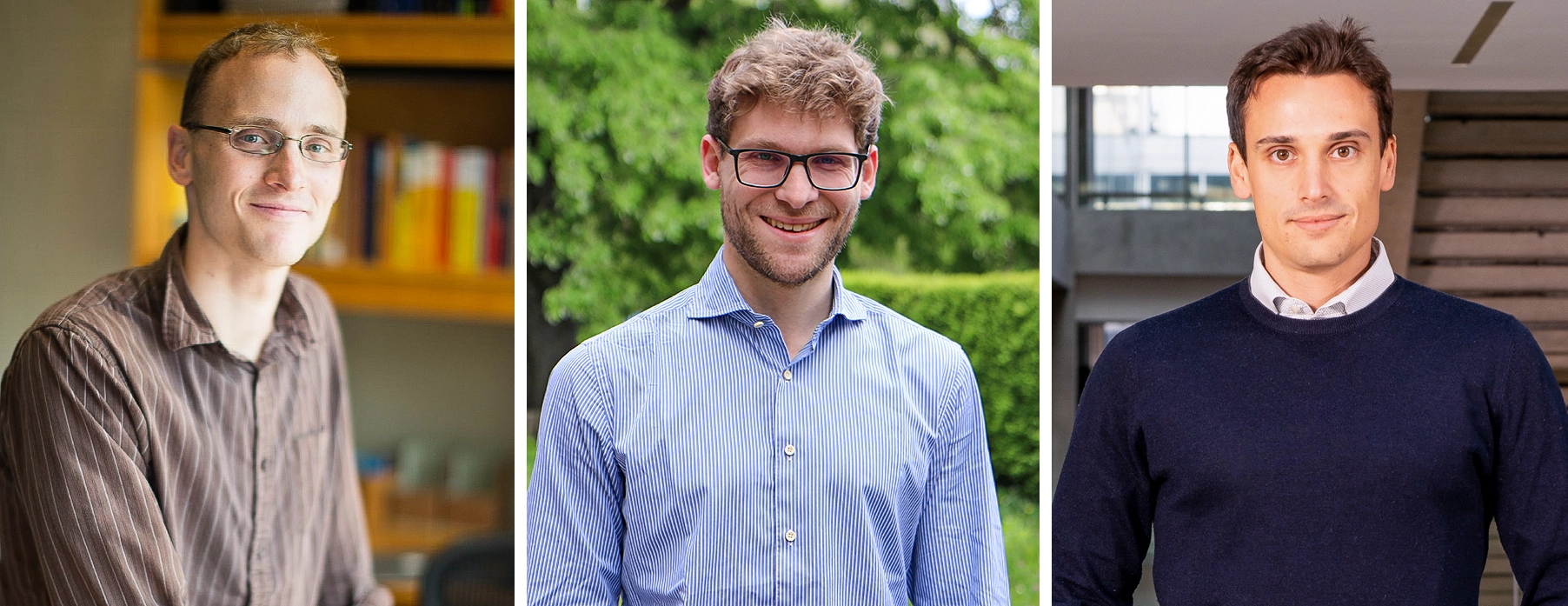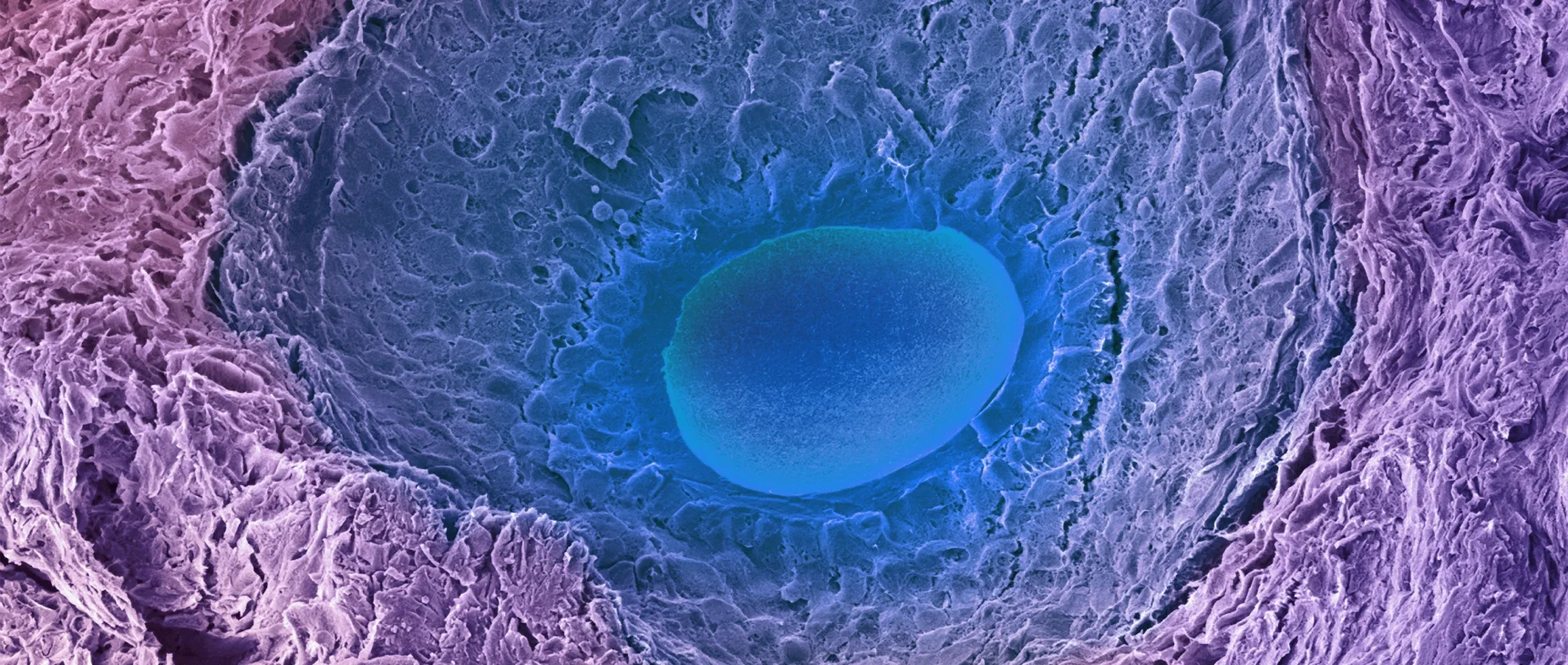Strangely Curved Shapes Break 50-Year-Old Geometry Conjecture

Alex Eben Meyer for Quanta Magazine
Introduction
In an old Indian parable, six blind men each touch a different part of an elephant. They disagree about what the elephant must look like: Is it smooth or rough? Is it like a snake (so thinks the man touching the trunk) or a fan (as the man touching the ear proposes)? If the blind men had combined their insights, they might have been able to give a correct account of the nature of the elephant. Instead, they end up fighting.
For decades, topologists have hoped to avoid falling into a similar trap. They thought they could characterize mathematical shapes by synthesizing numerous local measurements. But newly discovered, paradoxically curved spaces show that this isn’t always possible. “Things can be much more wild than what we thought,” said Elia Bruè of Bocconi University in Italy, who worked with two other mathematicians to demonstrate this.
Topologists stretch and compress the shapes they study. An infinitely thin rubber band, from a topological perspective, is equivalent to a circle, because you can easily deform it into a circular shape. Topologists tend to characterize shapes according to their global properties: Do they have holes, like a doughnut? Do they go on forever, like an infinite plane, or are they “compact” like the surface of a sphere? Do their “straight” lines go on indefinitely — making them what mathematicians call “complete” — or are there dead ends?
But as with the elephant in the parable, it can be hard to directly perceive the global nature of topological shapes. And so mathematicians want to understand their relationship to local geometric properties, like curvature. What can you say about a shape’s global topology, given information about how it curves at every point?
In 1968, John Milnor, a renowned mathematician then at Princeton University, conjectured that an average sense of a complete shape’s curvature was enough to tell us that it couldn’t have infinitely many holes. For the next 50 years, many results supported his claim. “You were tempted to believe it was true, because it was true in so many realistic cases,” said Jeff Cheeger of the Courant Institute of Mathematical Sciences at New York University. “And how in God’s name could you construct a counterexample to it?”
In this area of mathematics, said Vitali Kapovitch of the University of Toronto, “the Milnor conjecture was probably the biggest open problem.”
And so in 2020, Bruè and two colleagues set out to prove it. They ended up finding a counterexample instead — and built an entirely new kind of topological shape in the process. “It’s fantastic work,” Cheeger said. “A landmark.”
A Holey Grail of Topology
To understand Milnor’s conjecture, it helps to first consider how topologists and geometers think about curvature.
Both study manifolds — spaces that look flat when you zoom in on them. A tiny ant on the surface of a sphere, doughnut or other two-dimensional manifold will perceive its immediate neighborhood to be no different from a two-dimensional plane. But if the ant moves a little bit in any direction, it might notice that the space begins to shift, or curve. The idea of a locally flat manifold generalizes easily into higher dimensions. But curvature is tougher to define.
Take, for example, the simplest case: a one-dimensional object such as a circle. Surprisingly, these one-dimensional spaces cannot, in a mathematical sense, be intrinsically curved. A one-dimensional geometer walking along a circle, unable to perceive more than one dimension, would think she was traveling in a straight line — and would be surprised to find herself retracing her steps.
But if you embed a circle in a two-dimensional plane, it’s apparent that it has constant, positive extrinsic curvature. (The relevant distinction here is between intrinsic and extrinsic curvature: what you can see if you’re stuck inside the space, versus what you can see from outside it.)
Smaller circles bend more quickly as you move around them, and therefore have higher extrinsic curvature; bigger circles have lower curvature. (A straight line, in this sense, is like an infinitely big circle. Its curvature is zero, indicating that it’s completely flat.) We can also apply this definition to more complicated shapes that have changing curvature, by considering how big a circle you would need to match the shape at any given point. In this way, curvature is a local property: Every point on a manifold has an associated curvature.
For a surface — a two-dimensional manifold — there are many ways to place circles so that they match the surface’s curves. At a given point, you can measure curvature in any direction by placing an appropriately sized circle in that direction. But, surprisingly, it’s possible to define the surface’s curvature at that point with just one number. If you find the directions that give you the biggest and smallest curvature values, and multiply those values together, you get a number called the Gaussian curvature. This number summarizes information about how the surface bends in a useful way. Even more surprisingly, the Gaussian curvature turns out to be an intrinsic property: It doesn’t depend on any higher-dimensional background space the surface might be placed into. In this sense, paradoxically, cylinders are not intrinsically curved, though spheres are.
Merrill Sherman/Quanta Magazine
Merrill Sherman/Quanta Magazine
This number also helps mathematicians draw conclusions about the space’s topology.
Say, for instance, that the Gaussian curvature is positive at every point on a two-dimensional manifold. Then topologists can prove that it can’t have holes, like a doughnut. (It’s either the standard surface of a sphere or one other, more complicated possibility.) If, on the other hand, the Gaussian curvature is zero at every point, there are solutions both with and without holes: The manifold could lie flat, like an infinite plane, but it might also be a cylinder or a Möbius strip. A cylinder, unlike the infinite plane, has a hole in the middle. And Möbius strips are different from cylinders because of the twist they contain.
In three or more dimensions, it’s generally no longer possible to capture useful information about curvature with a single number. Mathematicians instead keep track of the curvature using “tensors,” which can be thought of as arrays of numbers that transform according to particular mathematical rules. There are several different ways to describe a manifold’s curvature using tensors, but one of the most important is something called the Ricci tensor. Like Gaussian curvature, it distills essential information into a (comparatively) simpler form.
Unlike numbers, tensors can’t be neatly sorted into order — but like numbers, they can be categorized as “nonnegative” if they satisfy a certain property. In 1968, Milnor conjectured that complete manifolds whose Ricci tensor is nonnegative at every point can’t have an infinite number of holes (as shown below to the right).
Manifolds with one hole (upper left), three holes (lower left) and an infinite number of holes (right).
Merrill Sherman/Quanta Magazine
More than half a century later, Bruè, along with Aaron Naber of Northwestern University and Daniele Semola of the Swiss Federal Institute of Technology Zurich, would prove him wrong.
Things Fall Apart
When Milnor posed his conjecture, mathematicians were just starting to explore the effects of Ricci curvature, which crops up over and over again throughout math and physics. “People knew very little at that point in time about anything, except that you could define it,” Naber said.
“We were in the wilderness at that time, on some arid plain with a few trees,” Cheeger said.
In the ensuing decades, mathematicians filled in this picture, constructing examples and developing a more concrete theory. All the evidence seemed to point to Milnor’s conjecture being true.
The conjecture is exceedingly easy to prove for one-dimensional manifolds. It has been known to be true in two dimensions since the 1930s. And in 2013, it was proved for three-dimensional manifolds. If you impose some additional constraints — assuming, for instance, that you’re always working with a manifold that’s closed and bounded, like a sphere, or whose volume grows at a particular rate — Milnor’s conjecture holds in all dimensions. And in 1978, a mathematician named Mikhael Gromov showed that if a different, more detailed measure of curvature is always nonnegative, then the manifold must have only a finite number of holes.
“Basically, you assume anything at all, and it becomes true,” Naber said.

Aaron Naber (left), Daniele Semola (center) and Elia Bruè found a counterexample to a 50-year-old conjecture after two years of failed attempts to prove it.
From left: Courtesy of Aaron Naber; Monika Krichel/ETH Zurich; Paolo Tonato
Over the years, Naber tried several times to prove the conjecture in full generality — for all possible dimensions, without making any of those extra assumptions. He failed. Later, at a conference in 2019, he met Bruè and Semola, both then graduate students at the Scuola Normale Superiore in Pisa, and the three of them started working together on a different problem. By November 2020, they’d solved that problem, and Bruè and Semola had gotten their doctorates. So the three of them decided to make a new attempt to prove Milnor’s conjecture.
They kept at it for more than two years. “We tried all the tricks that we knew,” Semola said.
“We spent just an embarrassing amount of time trying to prove it,” Naber said. This included writing up an 80-page proof that turned out to be incorrect — “the most I’ve personally ever written before something broke down.”
But it broke down in a way that the mathematicians found informative. “When we realized that the strategy was flawed, that got us to the point that we started believing that maybe there was room for building a counterexample,” Semola said.
From there, things proceeded more smoothly. In a matter of months, the trio figured out how to construct a strange seven-dimensional manifold. They built it by gluing together infinitely many seven-dimensional pieces in subtle and intricate ways, assembling the entire manifold they needed bit by bit. All the while, they had to make sure that the Ricci curvature always stayed nonnegative. And they had to avoid accidentally satisfying any of the many properties for which Milnor’s conjecture was already known to be true. The mathematicians ended up with what they called a smooth fractal snowflake — an infinite and delicate self-similar structure.
It had nonnegative Ricci curvature at every point. And it had an infinite number of holes. They had disproved Milnor’s conjecture.
“It’s more complicated than all the previous constructions” of manifolds with nonnegative Ricci curvature, said Guofang Wei of the University of California, Santa Barbara.
Bruè, Naber and Semola, all geometers, later shared their work with several topologists, who informed them that, to their surprise, they’d created a new topological space entirely. And it wasn’t because there was something special about seven dimensions. Using similar techniques, the trio was able to build analogous counterexamples in higher-dimensional spaces (which they said was easy), as well as in six dimensions (which was hard). Nobody yet knows if a counterexample exists in four or five dimensions.
Because nonnegative Ricci curvature is a condition that appears often in math and physics, “one would hope that you have a certain amount of innate control over these things,” Naber said. But it turns out that shapes with nonnegative Ricci curvature are more flexible and less well behaved than mathematicians had expected — complicating their understanding of the relationship between local geometric properties and global topological ones.
Before the discovery of the new counterexamples, “you could sort of hope to really understand what the manifolds all look like,” said Ben Weinkove of Northwestern University. But now, “it’s just a Pandora’s box of possibilities.”
Correction: May 14, 2024
Elia Bruè and Daniele Semola went to graduate school at the Scuola Normale Superiore in Pisa, and not at the University of Pisa, as this article originally stated. The text has been updated.



